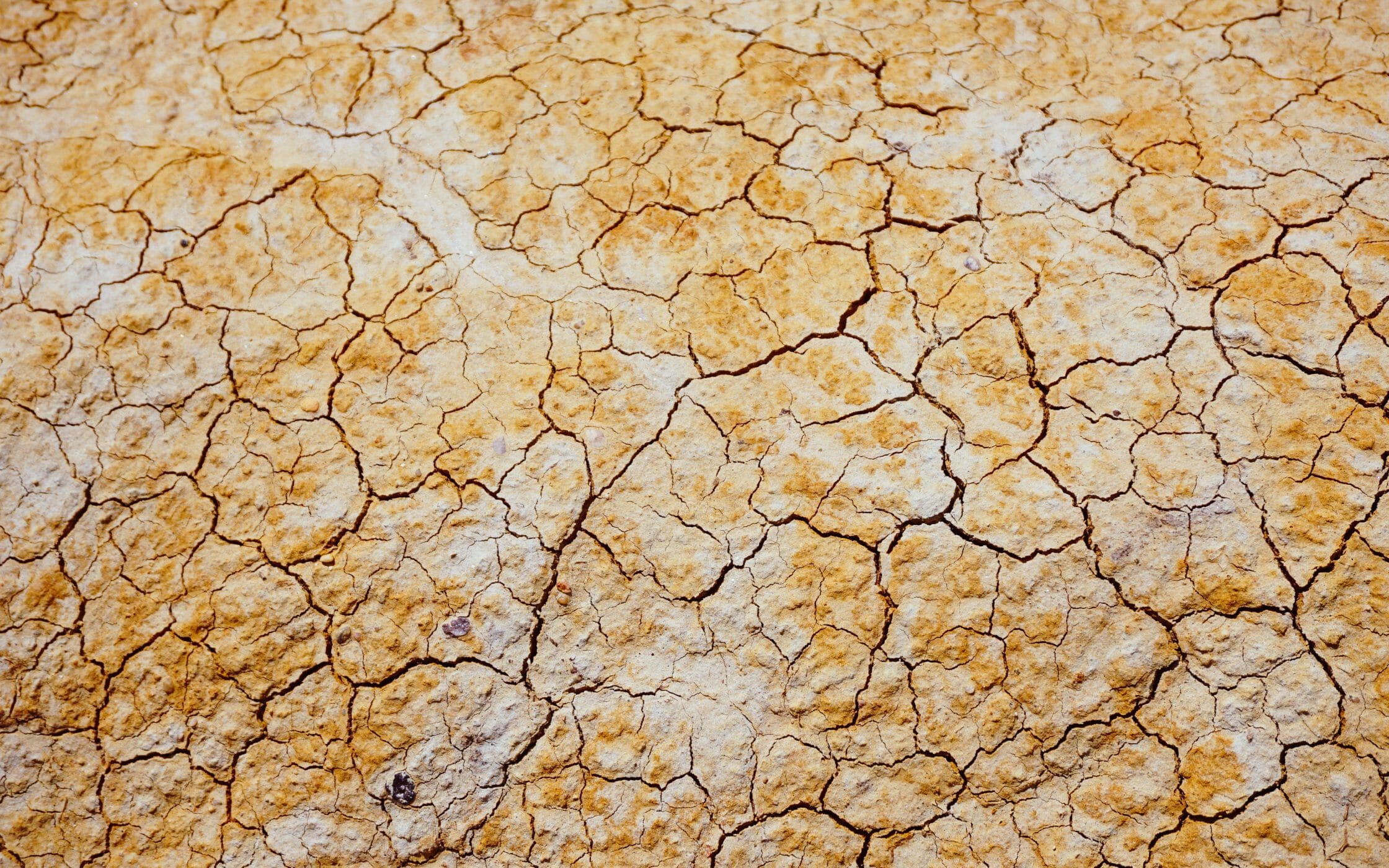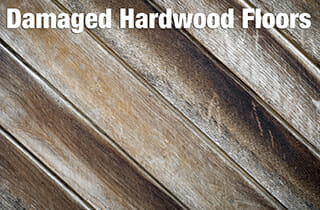
RESTORATION DRYING WITH HEAT
Part 2
Part 1 of this series discussed some of the physical changes that occur when you add heat to water and wet materials. That was the science related side of the topic. Now in Part 2, we extend that knowledge to the day-to-day application of heat on restoration drying jobs.
There are a couple of philosophies concerning the use of heat in restoration drying. First, the “Heat Only” advocates contend that HEAT is all you need. It is applied exclusively and universally on all drying projects. They ventilate the evaporated water outside the structure, relying on the outside air to provide the lower vapor pressure necessary for effective drying. Of course, the higher the moisture-content of the outside air, the higher the temperatures that must be achieved in the wet materials. Then, there are those who use heat as just one more tool, using outside air when appropriate and convenient, but most often combining heat with LGR dehumidification and airflow strategies.
How Much Heat? Where and When?
The big question is “How MUCH heat?” How many BTUs should I bring to the job? There are currently no set standards to guide heater sizing for a restoration job. Some common HVAC calculators tell you that for a 1,000 cubic foot room with average insulation, 2,000 BTUs will raise the temperature 10°F and that the same room with poor insulation requires 4,200 BTUs. These figures do not take into account the requirement of around 1,000 BTUs to evaporate each pint of water and the thermal load of raising the temperatures of the materials.
The actual process of sizing heaters for any specific situation will involve professional judgment that considers several variables, such as: outside weather, type of construction, duration of the wetting, materials and finishes affected, and proximity to occupied areas. In addition, there will often be non-removable, built-in or specialty contents, other restoration equipment, and a wide array of temperature related concerns specific to the job. Keep in mind that heat drying specifically moves conditions well beyond those normally encountered through seasonal fluctuations. Heater sizing should consider the ability of the drying chamber to dissipate heat and control the elevated humidity in the air. The restorer should pre-determine the temperatures to be reached and use thermostat controls to stay within that range.
Some restoration professionals use heat mostly on heavy, dense materials like concrete, plaster, and masonry. Heat is also effective for drying the wood structure of a building. Structural beams and timbers are thick enough that, when thoroughly wet, can take an extremely long time to dry. Drying structural lumber with heat is one of the more predictable and forgiving heat applications. It may be good to train on open structural members before moving on to more sensitive applications.
The simplest time to apply heat is at the beginning of the drying job when there is a lot of surface moisture, which responds very rapidly to heat because it does not have to diffuse through the material. At this stage of drying, the rapid evaporation that is possible with added heat can increase the dew point of the air above the temperatures of the rest of the structure. This can result in unwanted condensation (often in hidden locations) and secondary damage within the structure. This unwanted condensation is fairly common, especially when cooler surfaces are present.
Most restoration companies are focused on monitoring the affected area. In heat drying it is important to also know what is happening in the previously unaffected areas as well. The absence of vapor barriers on interior walls and ceilings, plus the number of penetrations for utilities and HVAC makes a rise in humidity levels in unaffected areas virtually inevitable. Often any condensation that may occur is dried as the restoration process continues, but it is important to monitor and verify.
Unless you have an overabundance of BTUs to focus on a small area, it will be hard to overheat an actual wet surface, because the BTUs required by evaporation will have a cooling effect. But as the surface dries this evaporative cooling diminishes, and its temperature can rise very quickly. This is why it is important to carefully monitor the progression of the job when using heat.

Some General Concepts
There are a few general concepts involved when determining the maximum temperatures to be safely achieved. Structures and their contents are a complex mixture of various fabrics, woods, plastics, metals and finishes. Some materials are more easily damaged by high heat while others can handle higher temperatures without consequence. Furnishings like candles, plants and fish tanks are sensitive to temperature as are some foods like candy and wines.
Melting can be a concern, but more commonly you will see material weakness/failure occurring far short of melting, such as occurs with plastic mini blinds. Watch for over drying wood trim that can cause irreversible shrinkage and cracking. The white glue used in some crown molding and finger jointed trim lumber begins to soften around 90°F. So, if the molding has any internal stresses the joints can shift.
According to the Gypsum Association, gypsum wallboard (drywall) should not be exposed to temperatures above 125°F for extended periods of time because the gypsum crystals lose their water-of-hydration and the fire resistance degrades drastically (https://www.gypsum.org/). Drywall seam compound is usually good but depends upon proper mixing/application/curing conditions, which are unknown to the restorer.

Generally, anything over 95°F is getting into the zone of watchful concern. Those who choose to go to 120°F would be wise to start small and closely monitor the results until developing a good professional feel for the rapid changes and the potentially damaging conditions. The outlet temperature of any heater is going to be several degrees hotter than the desired target temperature. Take care to insure that this hot air is not focused directly onto sensitive surfaces like hardwood flooring (see Pict. 1). It is very easy to shrink and distort flooring with too much heat. This is because wood flooring has an asymmetric evaporation profile, i.e. — its top surface evaporation is very different than the bottom. Solid hardwood floors can be resurfaced if needed; but engineered hardwood flooring, once soaked, is usually removed. Any delicate or thin construction should be watched carefully for cracking or over drying. Keep in mind that removing too much water from a material can cause significant shrinkage, which for most materials can be irreversible.
Focusing heat down around the wet material is an ongoing problem because hot air is less dense than colder air, so it is always trying to rise to the ceiling. Directing the heat to the wet materials and then tenting with polyethylene sheeting or floating the carpet with the heated air are common methods. Where smaller-scale tenting is impractical the usual method is to use the existing structure to create a drying chamber and use air movement to transfer the heat and move the moisture.
Supplemental heat is a necessity in cooler environments to accelerate drying but heat can assist almost anywhere the surface temperature of the wet materials is under 75°F. Heat can also be used to assist other drying methods. For instance in cool environments, it can bring temperatures up to the effective operating range of dehumidifiers. Advances in LGR technology have resulted in dehumidifiers with operating ranges up to 125° and pre-cooling attachments that increase water removal rates at elevated temperatures. These advances can provide the restoration professional with all the benefits of using heat to raise the vapor pressure of the wet materials while still allowing the use of dehumidifiers to reduce the vapor pressure of the air. When running portable desiccant dehumidifiers in colder weather, heat can be applied to the reactivation input air to increase the regeneration efficiency; this can provide noticeably drier process air. There are many complex ways to successfully employ heat, like any powerful tool. But it is also possible to be highly successful using only the basics of heat, moisture removal, and air movement.
Drying Too Fast
Some people believe that heat can drive moisture deeper into a material. After applying heat to a material for some period of time they have seen the evaporation fall off and, according to noninvasive meters, the material appears to be dry. The truth is that if too much heat or air flow is applied, the surface layer dries out; the evaporation rate falls off as the outward moisture movement by capillary action and diffusion is diminished because of the reduced conduction of the dry surface layer. This problem is often referred to as “case hardening”. The surface was dried too fast… faster than the internal moisture could flow to the surface. This is similar to a baked loaf of bread — a hard crust with a moist inside. The outside shouldn’t be dried faster than moisture can move to the surface. Case hardening can be very deceiving, because the material looks and feels dry. The fix for this problem is to check using a penetrating type meter. If the interior reads moist,then the material needs some time to re-establish moisture distribution. More than once equipment has been pulled from a job only to have the inner moisture work its way out to the surface and cause problems like finishes being applied to still wet materials.
Standards and Certifications

There is some controversy questioning the worth of standards-agency certifications for drying equipment. Heating equipment seems especially prone to these questions. The bottom line is UL and ETL certifications cannot guarantee being held harmless against product liability claims, but they do help ensure that (short of gross negligence) an operator will not fall to a summary finding of fault. Possession of these certifications is extremely important as they show, via a recognized third party, that the equipment conforms to a good faith, nationally recognized consensus standard of safety and performance. UL and ETL certifications (see Pict. 2) will provide you and your equipment with at least an initial positive standing in the eyes of the law. Nonetheless, knowledge and responsible use of the heating equipment can make or break a case if something does happen to go wrong.
In the end it is the restorer’s responsibility to balance the material water content and drying temperature with your moisture removal rate based on the equipment available… all the while keeping in mind what temperature the materials can support without being damaged. These factors work together to determine your optimal setup for the current conditions on the job.
Larry Carlson; Restoration Industry Manager, Phoenix Restoration Equipment
Mike Steffes; Lab Scientist, Therma-Stor, LLC